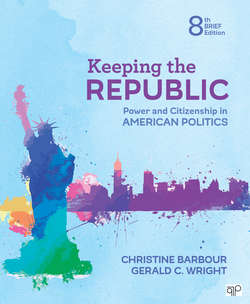Читать книгу Keeping the Republic - Christine Barbour - Страница 145
На сайте Литреса книга снята с продажи.
What to Watch Out For
ОглавлениеIt’s not always easy to tell the difference between real news and fake news, but there are a few steps you can take to critically assess whether something is real or satire. Whether or not you actually find it funny is wholly up to you.
Notice the presentation. Fake news sites take great pains to look and sound like authentic journalism while “reporting” stories that are completely untrue. Site names like Daily Currant, National Report, Empire News, and World News Daily Report sound like legitimate news sources, and their format and style mimic hard news. Even the well-known satire site The Onion, despite its silly name and often hilarious headlines, still gets mistaken for real news often enough that, by 2015, Facebook was considering adding a “satire” tag to Onion stories shared on the site.4 Remember that if something looks like news and sounds like news . . . it still might not be news. Googling the site’s name will usually tell you if it’s true.
Know your satire sources. Most people know satire when they see it, and stories from traditional comedy sites (like Saturday Night Live’s “Weekend Update” or The Daily Show) are hard to mistake as real news. But as a consumer of news from Internet sources, it’s up to you to know which “news” sites are real and which are satire. Further muddying the waters are blogs connected to more traditional news publications, such as The New Yorker’s “Borowitz Report,” which, other than the inclusion of the word “humor” in the site’s URL, is not always recognizable as satire.
Follow the links. Is what you are reading original reporting, or is it a story about a story from another web site or news source? If the source of a story is a link to another story—check the original source.
Don’t make laughter your guide. Remember that satire doesn’t have to be funny to be fake: some news satire sites are, for the most part, completely devoid of anything you might call a “joke,” depending on shock value or sheer unlikeliness for their appeal.
Beware news reports that seem to skewer someone you already don’t like. When individuals come across something that seems to support their preferred narrative, they tend to want to believe it. In 2013, for example, a Daily Currant report that liberal economist Paul Krugman had filed for bankruptcy was quickly picked up by conservative blogs, and another Daily Currant story that Sarah Palin had joined Al Jazeera was reposted to liberal ones.5 If something you read seems to “prove” you were right all along about celebrity X or politician Y, consider whether you are perhaps too eager to believe.
1. Daily Currant, March 22, 2016.
2. David Weigel, “‘I Want to Believe’: Why Does the Media Keep Running Fake Stories From a Joke-Free Satire Site?” Slate, March 11, 2013, www.slate.com/articles/news_and_politics/politics/2013/03/daily_currant_satire_the_fake_news_website_keeps_fooling_journalists.html.
3. Max Read, “Breitbart Fooled by Joke News Site After Blasting Writer for Being Fooled by Same Joke News Site,” Gawker, March 11, 2013, gawker.com/5989887/breitbartcom-fooled-by-joke-news-site-after-blasting-writer-for-being-fooled-by-same-joke-news-site.
4. Alex Goldman, “Facebook Attempts to Teach Its Users to Recognize Satire—With a ‘Satire’ Tag,” On the Media, August 18, 2014, www.onthemedia.org/story/facebook-attempts-teach-its-users-recognize-satire-satire-tag/.
5. Ibid.
Coming into office in 1969, however, President Nixon made it one of his administration’s goals to control pornography in America. Once the Court began to reflect the ideological change that came with Nixon’s appointees, rulings became more restrictive. In 1973 the Court developed the Miller test, which returned more control over the definition of obscenity to state legislatures and local standards. Under the Miller test, the Court asks “whether the work depicts or describes, in a patently offensive way, sexual conduct specifically defined by state law” and “whether the work, taken as a whole, lacks serious literary, artistic, political or scientific value” (called the SLAPS test).43 These provisions have also been open to interpretation, and the Court has tried to refine them over time. The emphasis on local standards has meant that pornographers can look for those places with the most lenient definitions of obscenity in which to produce and market their work, and the Court has let this practice go on.
Miller test the rule used by the courts in which the definition of obscenity must be based on local standards
Still, the question of whether obscenity should be protected speech raises some fundamental issues, chief among them defining what is obscene. Justice John Marshall Harlan was quite right when he wrote that “one man’s vulgarity is another man’s lyric,”44 raising the inescapable possibility of majorities enforcing decisions on minorities. People offended by what they consider to be obscenity might advocate banning adult bookstores, nude dancing at bars, and naked women on magazine covers at the supermarket. Many feminists argue that pornography represents aggression toward women and should be banned primarily because it perpetuates stereotypes and breeds violence. And some people carry the notion of obscenity further, arguing that selling violent video games to minors is obscene. (The Court has ruled it is not.45)
